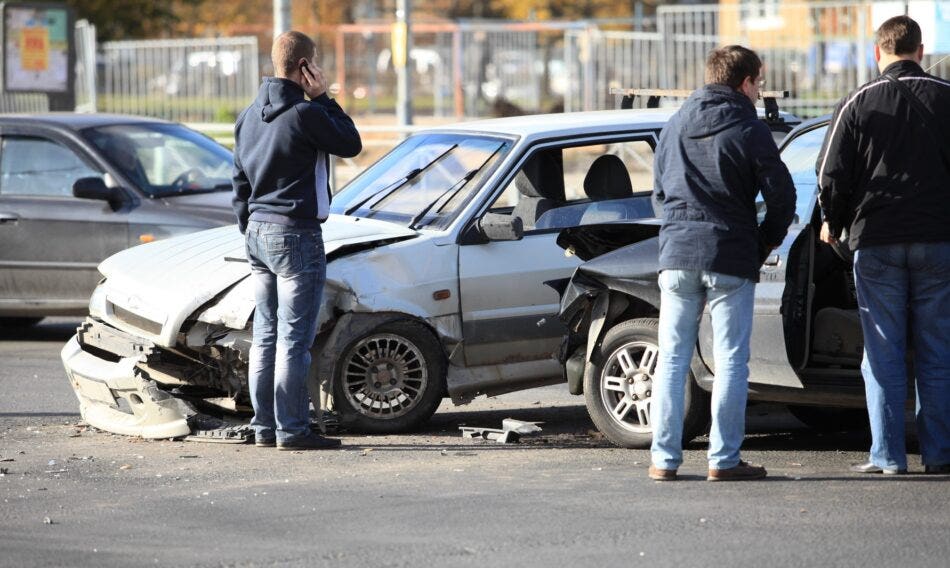Getting into an accident is a stressful situation, no matter how minor it is. Is anyone hurt? Who was at fault? Who’s going to pay for repairs? How much is this going to cost? It’s a lot to deal with. But when you learn the other driver doesn’t even have any car insurance, you have even more questions.
So what happens if the driver who hit you doesn’t have car insurance? It will depend on the individual situation.
Car Insurance is Required by Law
All Canadian provinces and territories require drivers to have third party liability insurance and accident benefits coverage if they own a vehicle and park or drive it on public roads. If you’re in an accident, this coverage helps cover expenses if you’re at fault including:
- Legal expenses such as defence costs, settlements and judgement awards if you’re sued by another driver.
- Medical payments if the accident you caused resulted in another person getting injured.
- Covers the repair or replacement of property if the accident you caused resulted in damages.
The basic coverage required by law is only $200,000 which can often not be enough given the costs of repairs, replacement, medical care, and lawsuits. (For reference, we recommend our clients have $2 million of third party liability coverage.)
It is entirely possible that the driver only has this minimum coverage. According to a 2011 study by the US-based Insurance Research Council, about 14% of drivers are operating without car insurance. While they will likely face a fine, potentially lose their license and even be faced criminal charges, where does this leave you?
If the Other Drive Isn’t Insured
What happens after the accident when it comes to compensation will depend on the province you live in and where the accident took place. If you live where there is no-fault insurance, you will continue to deal with your own insurance company when making the claim. You won’t have to chase down the other driver. The benefit of this means you can settle your claims faster and receive any benefit you’re entitled to sooner. However, it may result in your rates going up.
Afterwards, your insurance company would chase compensation from the other driver. Usually, this is done with the other driver’s insurance company in a process known as subrogation. However, since the other driver is uninsured, they will unable to do this.
With an at-fault insurance province, you would still open a claim with your insurance provider. They will help you navigate the process of getting compensation after the accident. In Alberta, for example, you would be eligible for up to $200,000 through the Alberta Motor Vehicle Accident Claims Program.
Regardless of the fault settlement, if you have the SEF44 endorsement on your car insurance, you have additional options. This endorsement or add-on coverage is commonly known as Family Protection or Uninsured Motorist endorsement. It makes up any shortfall if you’re involved in an accident with an uninsured or underinsured driver. Your coverage matches the amount of coverage you have for third party liability insurance.
If you don’t have this coverage, you may not be able to recoup your full costs. The other driver may not have assets enough to be worth suing them.
Protect Yourself Against Uninsured Drivers
The best thing to do is protect yourself against uninsured drivers ahead of time by adding the SEF44 endorsement to your car insurance. You should also have adequate third party liability insurance to ensure you’re properly covered should you be the driver at fault (and to ensure your SEF 44 coverage is adequate).
If you’re in an accident with an uninsured driver…
Follow these steps if you’re in an accident with an uninsured driver:
- Call the police. While not all accidents require a police presence, you’ll need the police there if the other driver is uninsured. You’ll need a police report and documentation the other driver is uninsured.
- Take pictures and/or video, if it’s safe to do so. While you should always document the damage, it’s especially important when dealing with an uninsured driver. You want a record of what happened and the damage that was caused.
- Contact your insurer. This will start the claims process. You should inform them that the other driver is uninsured right away. Your insurer will explain the next steps and how it will work with the other driver being uninsured.
Your broker is here to answer your questions and support you through this process. Don’t hesitate to reach out to us!

